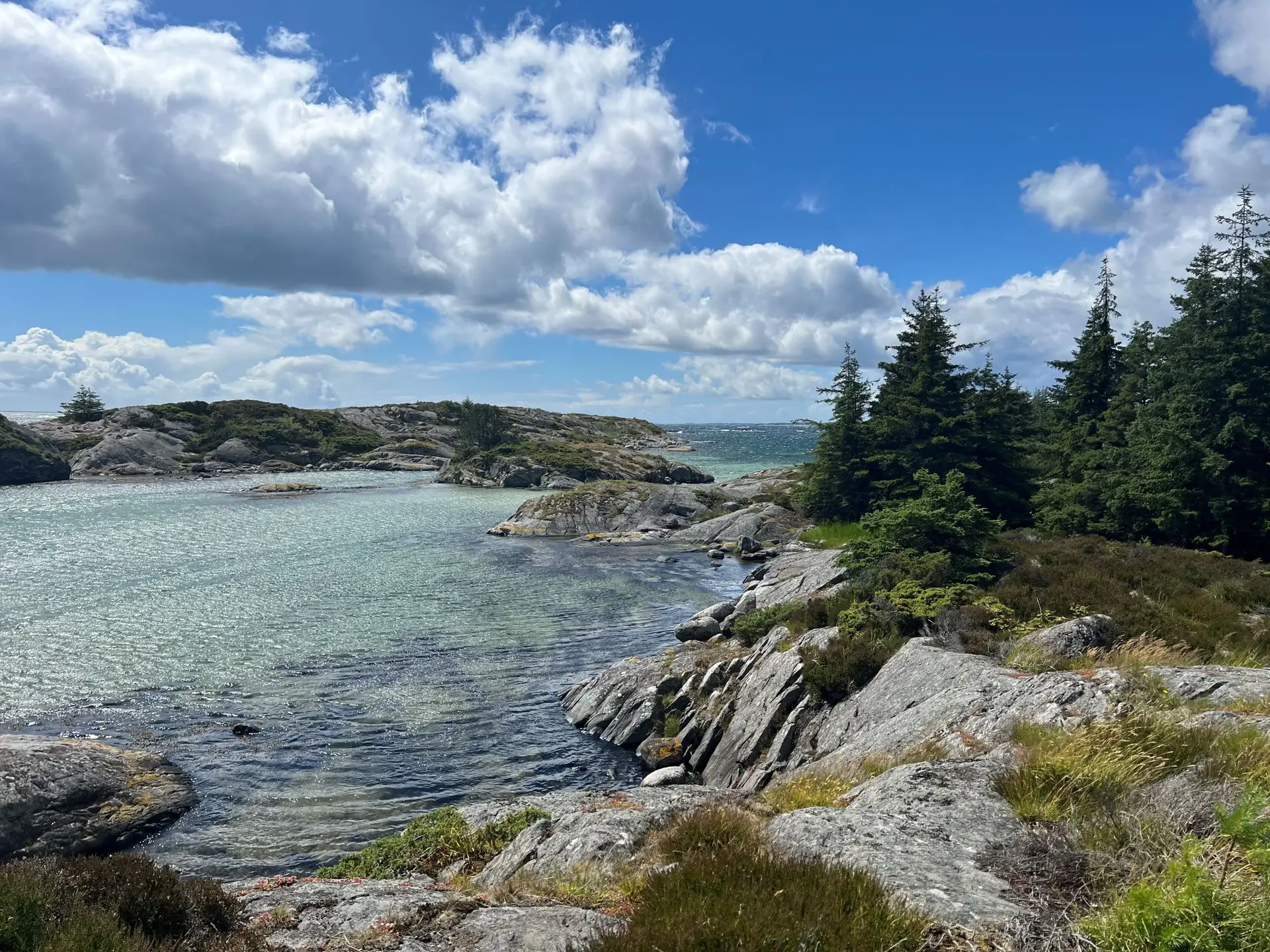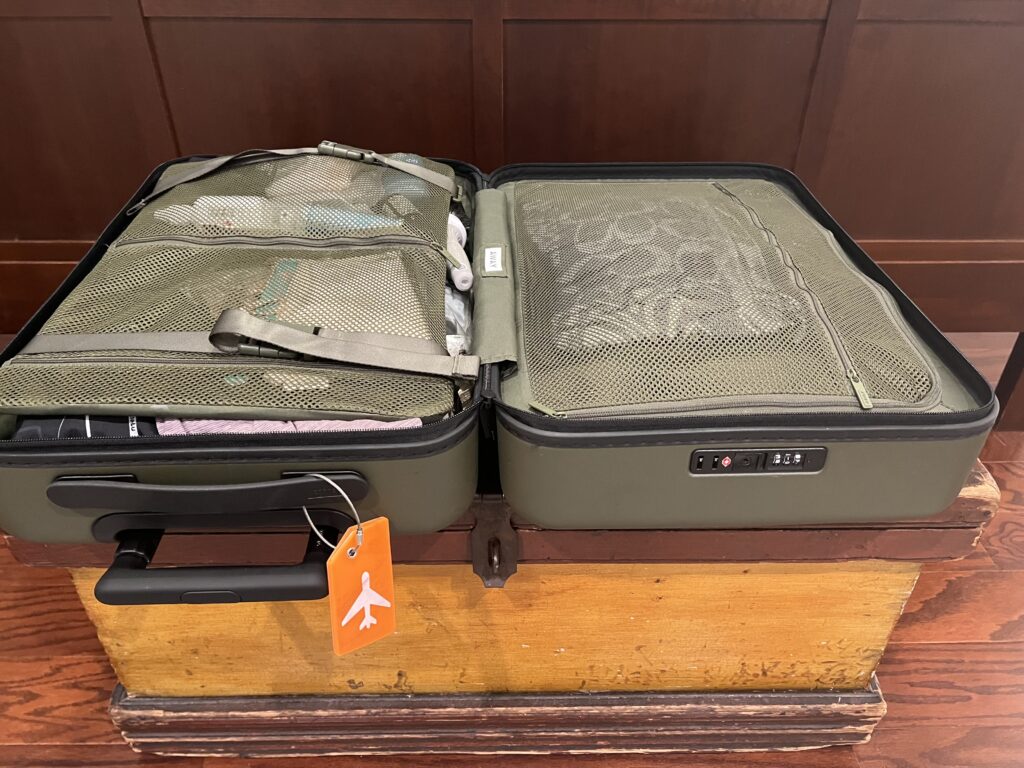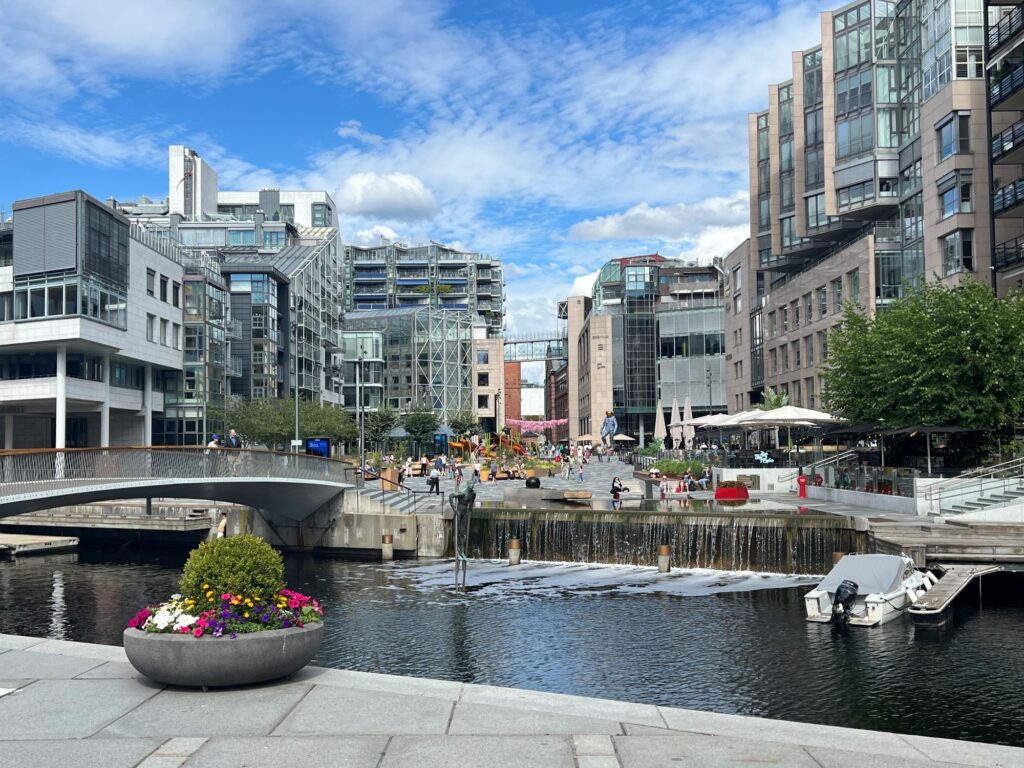I first visited Norway’s Southeast Coast as a summer exchange student in high school, and this return trip is both a sentimental journey and another tremendous learning experience. It is a mesmerizing, soothing landscape along Oslofjord to the North Sea. Return travel can be disappointing, but I’ve already concluded that after this journey, I’ll be truly rewarded – and all the wiser.
The world is even more unsettled – the presidential campaign in the U.S. makes the then-fearful Barry Goldwater candidacy in that summer of 1964 seem quite benign. Once again, seeing the U.S. from abroad, coupled with a deep dive into another nation’s culture, shakes up my own worldview, giving me new awareness and broader understanding of how our nation appears to the rest of the world.
I wrote back then as a teenager: “This summer was the most wonderful experience of my life,” noting that the description was both “trite” and “overused” but at the same time, “truthful.” And, in another comment, “It is impossible to explain the great tie I have to Norway and my family there.” Despite staying in close touch with my “Norwegian family” over the years, for this return decades later, I’m feeling quite a bit of anticipation and curiosity. Did it really launch me as a Womantraveler? Well, let’s find out…
Going South (July 7)
The coastal highway from Oslo southwest toward the southernmost tip of Norway winds around mountains and through deep tunnels and cavernous gorges where rivers and streams are fed by the long and deep Oslofjord. What an engineering feat, creating flat terrain where it doesn’t exist to build a roadbed on the sides of mountains that slope sharply to the sea . The scenery is beautiful, marked by enormous boulders, jagged cliffs and mesh webbing to hold back potential landslides. The occasional valley holds a farm, usually painted deep red, thanks to the abundant ferrous oxide in the soil for ready pigment. The landscape is deeply green, populated by towering Norway spruce, sprawling birch and a host of assorted plant species.
You can proceed at a good clip along two lanes in each direction for much of the highway, except where the land narrows to single lanes and bottlenecks in the summer vacation traffic; plus we had to limit our speed due to the small trailer hitched to the back of our 2003 Mercedes with luggage, bedding, fishing gear and canisters that produced home-distilled wine and beer. In about 5 hours, including one stop, we arrived on Northway’s Southeast Coast in the village of Grimstad, where we transferred our gear and food into a small power boat. The ride to the island from the dock took about 10 minutes in light rain.
From my first trip – “I see first the small Norwegian flag (pennant version) indicating that people are at home.” In the summer, when people vacation on the islands, the flags, pennant or full size, fly everywhere.
At Home on Langøy off the North Sea (July 8)
An extreme storm hovered through most of the night, and thunder reverberated among the granite islands. It’s clearing this morning, but the west northwestern winds clock steadily at 25 mph, gusting to 38 mph. Fortunately we’re on the leeward side of a cove and my bedroom is facing north-northeast, shielded from the powerful forces. How delightfully wild it is – I truly feel like a Norse seawoman!
I sit with my first coffee by the hearth ashes looking back toward the mainland. The calmer waters in the cove are clear green, reflecting pine-green tones from the tall Norwegian fir trees surrounding it. When I was first here, you could sit on the patio and view the North Sea across tall grass, scrub trees and bushes, wild strawberries and smooth rocks; now we are enshrouded by tall and dense trees, protected from the open waters with a ready supply of firewood. The pine sapling we painted with my name attached is long gone.
Northway’s Southeast Coast is reminiscent of midcoast Maine around Penobscot Bay, small islands dotted with summer homes and boat houses. The channel is narrower and they are closer to the mainland than in Maine, and smaller. In today’s high winds, the flags are flying completely horizontally.
My friend Bjørg’s grandmother, the daughter of a sea captain, was born on a nearby island. As an adult, she returned to buy five of them, naming the main one “Langøy,” or long island, and her family has been coming here ever since. The current generations have built three houses, which they rotate in season, and with their own grandchildren, I count a five-generation family footprint.
Norway exudes a spirit of common purpose. Individuals can own land, maintain it and have rights to protected space within 150 meters of their houses or cabins; yet, on these islands, or in the mountains, anyone can boat or camp on the property, respecting those boundaries. We were talking yesterday about mushroom foraging as chanterelles are prolific now, and I learned that the forests in Norway also belong to the people – they are accessible to everyone and it’s illegal to fence them off. Again, the sociocultural cacophony between the U.S. and Norway with respect to “community responsibility” and “community purpose” is startling.
We put on heavy windbreakers and tall boots and tromped across the island through the field and across the rocks to the North Sea. The 35 mph gusts make it difficult to stand up; the water is so clear that you can see to the bottom up close; in the distance, high white breakers pound the rocks. The trees shelter chanterelles, wildflowers and pollinators as we cut through the tall grass.
My OnCloud sneakers, though sturdy on my foot, were a bit slippery on the mossy rocks and I was grateful for my friend’s hand and a tall somewhat crooked branch I found for a walking stick. At one point we slid down mostly on our bottoms to better footing. My friend picked wildflowers for her table – bluebells, pink flowering oregano, yellow pentas and dandelions; she passed up the tall magenta digitalis, good for hearts but toxic to passersby. As I remember from my first visit, the landscape is wild and freeing. I was happy to arrive onto the sunny sheltered deck of one of their houses, protected from the relentless wind.
Coastal Fishing along Norway’s Southeast Coast, July 9
I’ve already lost count of the days. The evenings are light until late due to the “Midnight Sun” – everyone is up past midnight – and thus the mornings start late too.
Daylight lingers here on Norway’s Southeast Coast until it’s fully dark around midnight and dawn arrives around 4 a.m. Without shades in the northeast window, I rely on my airplane eye shades to fool my body into enough sleep. I’m up with my coffee while they take their first tea in bed, as is their daily ritual. I scan the news, which is terrible everywhere – France in electoral paralysis, US and the world fretting over Biden and Trump prospects, heat slamming the East Coast (with heat indexes between 100 and 110 each day in Charlotte, NC and into the 90s on Long Island) and jamming the West Coast (more than 115 some days in Bakersfield, CA); a hurricane is pounding Houston. I’m chilly here with air temps in the low to mid 60s, layering to get comfortable, while Bjørg takes a morning dip in the 60-degree sea!
The large breakfast at 11 or 11:30 is effectively brunch. Dinner is around 7 pm or later. We have sandwiches or cheese in between. They eat fewer vegetables or fruit than we do, although potatoes are frequent. The open-faced sandwiches (smørrebrod) are slathered with butter or mayonnaise, then topped with meat, cheese or cucumber and tomato slices. One evening we had boiled cauliflower as a side with roast chicken, along with our crispy potatoes.
Some years ago, water finally was piped to the island from the mainland, and residents share the cost. There is running water in the kitchen and sinks upstairs in two bedrooms on the same side of the house. However, I forgot that the “loo” is outside – even today. I take a refreshing hot shower in that outbuilding after two days, wash a couple of pieces of clothing to hang on the line and relax in the backyard sunny shelter where Bjørg is reading and sunning nearly topless.
The men, father and son (Rune and Trygve), spent most of the day preparing for their deep sea dive in the clear waters about 10 minutes away. They disappeared for no more than 90 minutes, and after diving to 23 meters, they returned with 8 large reddish-brown crabs, 20 giant scallops, 1 small flounder and a 200-year-old cowshell (locked up tight and its vintage a reliable estimate according to its size). Then the cleaning began.
Before we ate, Bjørg’s sisters came over from their shared house for an Apero cocktail. We sit on the north side of the house in the sun.
The dinner was delicious – prepared by my hosts and Trygve, who spent two years in culinary school before choosing finance as a profession. He gently cleans the scallops, digs out the firm tubular white meat in each and slices them thin in a sashimi presentation. The crabs arrive at the table cracked and we pick out the delicious white meat over the next hour. They eat theirs with mayonnaise on bread, and they also eat the brown guts which are considered a delicacy (ugh! I can’t bring myself to do that, though I put a small bit on my finger, and it tasted quite fine).
Rune brews his own beer and a lovely white wine cuvee of pinot grigio and sauvignon blanc, and Trygve brought a case of bottled beer, so the pleasant liquid is always flowing, as is the conversation. The lilt of Norwegian is extremely animated, with its ebbs, flows and punctuated articulation of certain vowels like “y” (ewry) “oy” (oooorrry) and “a” (aaah). I catch a few words but am mostly lost as they chatter away, though kindly reinterpret English from ten to fifty percent of the time, depending on the topic or location. Years ago, I learned the language but lost it without practice.
Reading my journal from my first visit, I generally agree with the following observations, although I’ve had a broader life experience since then for context. I wrote then: “I am thoroughly convinced that the Norwegians get much more out of life than we Americans have the opportunity to – they live life to the fullest extent in nearly every aspect; they are not concerned about status or fads; they are down-to-earth, forthright folk; they are proud, but they are sincere and hospitable, extremely friendly, vivacious, and wonderful…”
Touring the Islands along Norway’s Southeast Coast, July 10
I call it the “intercoastal” ride – the slow boat tour through Norway’s “southern archipelago” – hundreds of islands and skerries, dotted with idyllic villages, vacation homes, recreational areas and rich biodiversity along the southeast coast. Along Norway’s Southeast Coast, piles of granite boulders and sharp cliffs, carved out eons ago by glaciers, are sheltered by Norwegian pine (wide and full), non-native Sitka Spruce (tall and leaner), aspen and birch trees.
From our island it’s about 45 minutes to Lillesand, a small port featuring white framed houses, seafood restaurants and, of course, shopping. The area reminds me of the Eastern Shore of Maryland or coastal Connecticut, a mix of wealthy homes and small cabins, farms and casual vacationing in skiffs, campers and mini-beaches on the inlets.
We spot three enormous goats with towering antlers grazing at the top of rocky cliffs on an island that is completely disconnected from anything else. How did they get there?? (“People bring them in,” I’m told.) A polished forest green wooden motorboat, long preserved and lovingly cared for, passes on the right. Later comes a 40-foot sailboat with two masts, ample sleeping quarters and a German flag. We are leisurely cruising in our fishing boat, when a couple of teenagers race by in powered dingy. Thrill-seeking teens, not mindful of the rules of the waterways, clearly exist worldwide…
The Lillesand port is filled with pleasure boats; this is summer on the so-called “Norwegian riviera,” luxe not for its houses by and large but for its scenery and freedom. The North Sea and Denmark are just past the rocky islands rimming the coast.
We are here for gasoline, a few sundries and, most importantly, ice cream. Norwegian ice cream is delicious. I especially love the creamy rich soft-serve variety – I know from experience that it will immediately add a layer to my mid-body and hips but I don’t care.
The next day it rains and we read and play games. The men put out nets for fish and crabs. I learn a new term – “skitt fiske.” It’s roughly translated into English the way it sounds – with a “k” becoming a soft “h.” In Norway it’s bad luck to wish fisherman “good luck.” Conversely, you effectively wish them bad luck (technically, “dirty fishing”) so as not to jynx them. I think I’ll be able to find many uses for that term!
Literature and Crafts in the Norwegian Tradition, July 11
The nets yield five large fish – one cod, two mackerel and two large fish indigenous to the eastern Atlantic Ocean known in English as the “ballan wrasse;” they are distantly related to a parrotfish with respect to their bright coloration; they are firm and flavorful like a snapper and some people use them as bait fish.
We take an outing into the village of Grimstad, quaint in the center, with cobblestone streets, winding alleyways and more shops. Again the houses are white, which in many coastal communities are required by ordinance. Norwegian playwright/author Henrik Ibsen (A Doll’s House, Hedda Gabler, Enemy of the People) lived here for a time, and outside town, author Knut Hamsun bought a huge (white frame) farm with his Nobel prize for literature for Growth of the Soil in 1920, his epic about the very Norwegian topic – the relationship between humanity and nature.
We make a beeline to the knitting shop, with its shelves of yarn and utensils; knitting remains popular as traditional craft and my friends always have a project underway. There are several shops of Norwegian crafts – mainly textiles and ceramics. I’m looking for traditional hand-carved wooden trolls but they seem to have disappeared with commercial mass production, and what’s available now is somewhat scary, certainly less humorous and less playful. I settle for two “authentic” troll statues as souvenirs, which I’ll keep for myself instead of my young granddaughters, since I gave all my previous troll purchases as gifts. As always, we also have a grocery list of provisions to ferry back to the island, gasoline cans to fill – and on the way out of town, sanitizing fertilizer for the loo.
The fish have been marinated with cumin, coriander (fresh) and paprika and baked for fish tacos, which we eat with a homemade lime, mango and garlic salsa, and homemade pickled onions.
Hombursund Lighthouse on the North Sea, July 12
We tour around the family’s islands one last time; it’s been rainy and the North Sea is tussled, but not terribly. The Homborsund Lighthouse is a landmark I’ll never forget along Norway’s Southeast Coast, and on the way back to the house, we pass the home where my friend’s grandmother was born and grew up, before later returning to build this family summer home.
En route back to Oslo, 280 kilometers northeast, we stop for lunch in Asgardstrand to lunch with a friend; in this delightful village, artist Edvard Munch initially had a summer house that became his permanent residence in the early 1900s. Here he painted some of his best-known work. The region about an hour south of Oslo is flat with vast farmland bordering Oslofjord. The village is a small, close-knit community, with white – of course – homes and cottages, hilly winding streets and waterside walks.
According to the brochure in the one-room museum a few paces below the small Munch Hus (Munch House), the village’s landscape is a living element in his art, representing a common thread in his work and a range of moods from love’s many phases, to summery fun, to harvest time, to the imagination of children wandering in a fairytale forest.
It was here he painted one of his most famous masterpieces in 1899, “Girls on the Bridge,” with three girls on what was then a wooden footbridge and a large white home sheltered by a wall and trees in the background. On Facebook the other day, while I was writing this article, someone posted an image of this painting and asked the question, “does it look the same today?” I rarely comment but was compelled to respond: “Yes! The context and concept are preserved although the contours are somewhat different and the bridge is now reinforced stone. I was there recently!”
So, after nearly two weeks in Norway, I’ve kept my promise to myself – to return to this land, Norway’s Southeast Coast and the experience that had such a major influence on my life. The trip has stoked visual and emotional memories, and in many cases, enduring connections to what I value in life today about travel, living abroad, understanding others and maintaining a global perspective. I smile with deep satisfaction. No disappointment for me at all in this decision for “return travel.” It’s been just “deilig” (delightful). Clearly I’m not done with Norway yet!



